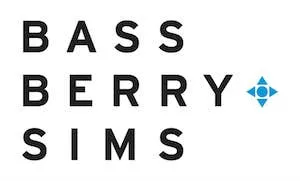Introduction
The U.S. Supreme Court recently construed the § 314(d) appeal bar in inter partes reviews (IPRs) as precluding appeals from time-bar determinations per § 315(b). Thryv, Inc. v. Click-to-Call Techs., LP, 140 S. Ct. 1367 (2020). This case also effectively wipes out the Federal Circuit's time-bar case law, making the USPTO's Patent Trial and Appeal Board (PTAB) the sole and final decision maker for all time-bar–related issues.
There is now a fairly robust body of case law surrounding what is and what is not appealable from the PTAB. At institution time, determinations of whether the petition met § 314(a)'s reasonable-likelihood-of-prevailing standard are not appealable and neither are other institution-related questions, such as timeliness or whether the petitioner is estopped. But, determinations made at institution related to jurisdiction or questions of whether the PTAB exceeded its statutory authority are appealable. After institution, there are few restrictions on appealable issues. In fact, estoppel questions arising post-institution are appealable, even though they are not appealable when made at institution time.
It has often been said that practitioners need to understand who their audience is to maximize their chances of success. In PTAB practice, the audience many times is both the PTAB judges as well as the Federal Circuit, and even perhaps the Supreme Court. But in some instances, the audience is likely only the PTAB judges. Knowing which issues are appealable and which are not is important for practitioners to properly frame their arguments in the best possible light. This article discusses that landscape.
Thryv Overview
Section 315(b) sets a one-year time bar where "[a]n inter partes review may not be instituted if the petition requesting the proceeding is filed more than 1 year after the date on which the petitioner, real party in interest, or privy of the petitioner is served with a complaint alleging infringement of the patent." And, § 314(d) specifies that the PTAB's "determination...whether to institute an [IPR] under this section shall be final and nonappealable." The dispute in Thryv turned on whether the phrase "under this section" of § 314(d) applied only to the PTAB's decision whether to institute on substantive decisions under § 314, or whether that section applied to the one-year time bar of § 315(b) as well. In a 7-2 decision, the Court held that decisions under § 315(b) are not appealable.
In Thryv, the patent owner had served the petitioner with a complaint for patent infringement more than one year before the petition's filing date. That action was eventually voluntarily dismissed. Under the PTAB's law of the time, the PTAB held that a voluntary dismissal did not invoke the one-year time bar of § 315(b). The patent owner appealed to the Federal Circuit in Click-To-Call Techs., LP v. Ingenio, Inc., 899 F.3d 1321 (Fed. Cir. 2018), and the court reversed, holding that the filing of an action that was voluntarily dismissed nevertheless triggered § 315(b)'s time-bar. That decision was appealed to the Supreme Court, which vacated the decision and remanded with instructions to dismiss the appeal for lack of appellate jurisdiction. The Supreme Court did not reach the issue of whether a voluntary dismissal starts the one-year time bar.
Importantly, the Supreme Court's decision also overturned the Federal Circuit's en banc holding in Wifi- One, LLC v. Broadcom Corp, 878 F.3d 1364 (Fed. Cir. 2018)(en banc). There, the Federal Circuit held that the USPTO's determinations under § 315(b) were appealable because the timeliness determination "is not 'closely related' to the institution decision addressed in § 314(a)." Id. at 1374.
The Cuozzo and SAS Decisions
Prior to Thryv, the Supreme Court addressed § 314(d)'s appeal bar in two other cases: Cuozzo and SAS. In Cuozzo Speed Techs., LLC v. Lee, 136 S. Ct. 2131 (2016), the Court held unreviewable the PTAB's application of 35 U.S.C. § 312(a)(3) (the provision requiring challenges be made with particularity). The Supreme Court stated that when a patent holder challenges the "information presented in the petition" or "where a patent holder grounds its claim in a statute closely related to that decision to institute inter partes review, § 314(d) bars judicial review." The Court noted exceptions: "where a petition fails to give 'sufficient notice' such that there is a due process problem with the entire proceeding" or when the USPTO acts "outside its statutory limits by, for example, canceling a patent claim for 'indefiniteness' under § 112...." The Court stated that these exceptions are properly reviewable under the Administrative Procedures Act (APA), "which enables reviewing courts to 'set aside agency action' that is 'contrary to constitutional right,' 'in excess of statutory jurisdiction,' or 'arbitrary [and] capricious.'" The Court provided no bright-line rules for identifying exceptions, which caused Justice Alito to express concern, noting that "how to determine which 'statutory limits' we should enforce and which we should not—remains a mystery." Id. at 2155 (Alito, J., dissenting).
In SAS, the Court was primarily concerned with whether the PTAB could institute an IPR on less than all the claims challenged in the petition. SAS Institute Inc. v. Iancu, 138 S. Ct. 1348 (2018). The USPTO Director argued that the Supreme Court lacked jurisdiction to decide that issue because Cuozzo foreclosed judicial review "of any legal question bearing on the institution of inter partes review— including whether the statute permits [the Director's] 'partial institution' practice." The Court, however, recognized that "§ 314(d) does not 'enable the agency to act outside its statutory limits.'" And, "[i]f a party believes the Patent Office has engaged in 'shenanigans' by exceeding its statutory bounds, judicial review remains available...." The Court found it did have authority to review the question on appeal, by stating, "that, of course, is exactly the sort of question we are called upon to decide today."
The Federal Circuit's Treatment of § 314(d)
The Federal Circuit has addressed the scope of § 314(d) on several occasions. In general, the Federal Circuit has been willing to find most institution-related issues non-appealable, but in limited situations, such as on a jurisdictional question (e.g., whether a patent qualifies for Covered Business Method (CBM) review), it has found that the court has power to review institution-related decisions.
What Has the Federal Circuit Found Unreviewable?
Institution decisions and reconsideration of those decisions are not appealable. BioDelivery Scis. Int'l, Inc. v. Aquestive Therapeutics, Inc., 935 F.3d 1362 (Fed. Cir. 2019) is an example. There, on appeal after a final written decision, the Federal Circuit remanded the case to the PTAB. The PTAB then reconsidered its institution decision and used its discretion to deny institution. That issue then went up to the Federal Circuit which held that § 314(d) prohibited the appeal. Similarly, the Federal Circuit concluded the PTAB's reconsideration of its institution of a CBM review, which it later vacated, was not appealable. GTNX, Inc. v. INTTRA, Inc., 789 F.3d 1309, 1313 (Fed. Cir. 2015).
The Federal Circuit has even held that the PTAB's institution decision is unreviewable when the PTAB applied the wrong priority date to a prior art reference in a non-instituted ground. Palo Alto Networks, Inc. v. Finjan, Inc., 777 Fed. Appx. 501, 505 (Fed. Cir. 2019) (non-precedential). Notably, there, the appellant did not raise the issue of partial institution in violation of SAS until oral arguments, so the Court deemed that argument waived and did not disturb the PTAB's decision. Id. Now, with the PTAB following SAS, similar circumstances may not arise.
More generally, the PTAB's statutory application at institution is not reviewable. For example, the Federal Circuit has found that determinations closely related to the § 315(b) time bar—privity and real-party-in-interest—are not appealable. MCM Portfolio LLC v. Hewlett-Packard Co., 812 F.3d 1284, 1287 (Fed. Cir. 2015); ESIP Series 2, LLC v. Puzhen Life USA, LLC, 958 F. 3d 1378, 1386 (Fed. Cir. 2020). And the PTAB's determination about whether a particular theory for the invalidity of a claim limitation was properly raised in a petition is not reviewable. Lone Star Silicon Innovations LLC v. Iancu, No. 2019-1669, 2020 WL 1487265, at *4–5 (Fed. Cir. Mar. 25, 2020) (non-precedential).
The Federal Circuit has also found unreviewable the dismissal of a petition under § 315(e)(1), the estoppel provision that precludes an IPR petitioner once a final written decision has been issued from requesting or maintaining a subsequent proceeding at the USPTO based on grounds that the petitioner raised or reasonably could have been raised in the IPR. Kingston Tech. Co., Inc. v. SPEX Techs., Inc., No. 2019-1342, 2019 WL 3337893 (Fed. Cir. 2019) (non-precedential).
What Has the Federal Circuit Found to be Reviewable?
The Federal Circuit has been less willing to find issues available for review at institution, but more so thereafter, even when involving issues usually raised at institution time. For example, whether a patent qualifies for CBM review is appealable, even though that determination is first made at institution time. Versata Dev. Grp., Inc. v. SAP Am., Inc., 793 F.3d 1306, 1322 (Fed. Cir. 2015). However, in Emerson Elec. Co. v. Sipco, LLC, No. 19-966, 2020 WL 3146672 (U.S. June 15, 2020), the Supreme Court recently granted certiorari, vacated, and remanded the Federal Circuit's decision below, instructing it to consider whether CBM jurisdiction is a reviewable issue in view of the Thryv decision.
As another example, estoppel issues raised post-institution have been found reviewable. Credit Acceptance Corp. v. Westlake Servs., 859 F.3d 1044, 1050 (Fed. Cir. 2017) (Reviewing the PTAB's § 325(e)(1) estoppel determination made post-institution via a motion to terminate in a CBM review). This case is instructive. In Kingston (discussed above), the Federal Circuit found that determinations at institution time made pursuant to the IPR equivalent of 325(e)(1)—315(e) (1)—were not appealable. However, in Credit Acceptance Corp., when § 325(e)(1) issues arose after institution, those issues were appealable. The difference was purely one of timing.
That rationale accords with the Federal Circuit's recent decision in Facebook, Inc. v. Windy City Innovations, LLC, No. 2018-1400, 2020 WL 5267975, at *1 (Fed. Cir. Sept. 4, 2020). There, the Court held that joinder decisions under § 315(c) were reviewable by the Court because "the joinder decision is a separate and subsequent decision" to the institution decision. The Court concluded that same-party joinder was not authorized by § 315(c) and that provision could not be used to circumvent § 315(b)'s time bar. These cases might suggest that raising an institution-related issue, like the § 315(b) one-year time bar, after institution to ensure that it is discussed in the final written decision may convert an otherwise unappealable issue into an appealable one. And this may be a worthwhile strategy to employ. However, at least specifically with respect to the one-year time bar, the Supreme Court may have foreclosed that option. In Thryv, the patent owner argued that § 315(b) is appealable because the PTAB discussed its time-bar ruling in the final written decision. The Supreme Court, however, was not convinced because "§ 315(b)'s sole office is to govern institution." Nevertheless, raising typically institution-related issues post-institution so that they are discussed in the final written decision may render them appealable for statutory provisions that are not solely tied to institution.
The Federal Circuit has also held that issues of assignor estoppel are reviewable. Arista Networks, Inc. v. Cisco Sys., Inc., 908 F.3d 792, 799– 801 (Fed. Cir. 2018). Practitioners should note, though, Arista's outcome was premised on the now-defunct holding of Wi-Fi One, LLC v. Broadcom Corp., 878 F.3d at 1370, abrogated by Thryv, 140 S. Ct. 1367, so the Federal Circuit may be willing to change its course if that issue is appealed again.
Non–institution-related issues arising after institution are almost certainly appealable. For example, the Federal Circuit has held that an adverse judgment following an institution decision is appealable. Arthrex, Inc. v. Smith & Nephew, Inc., 880 F.3d 1345, 1348 (Fed. Cir. 2018). In another instance, a procedural violation of the APA was found where a petitioner first included a factual argument in its reply, after the patent owner had already filed its response. In re NuVasive, Inc., 841 F.3d 966, 972–73 (Fed. Cir. 2016). The PTAB's reliance on that assertion in the final written decision deprived the patent owner of adequate notice and the opportunity to address that argument, thus justifying remand to the PTAB.
What Happens Now?
Most of the above-discussed cases should remain good law in view of Thryv. That decision did not fundamentally alter the scope or analysis of what is reviewable nor did it change the analysis of the PTAB acting outside of its statutory authority. But there will be challenges to some of the Federal Circuit cases, such as Versata and Arista. Arista may be unsettled because, as noted above, that case relied on the Wi-Fi One, LLC v. Broadcom Corp., which was overruled by Thryv.
Additionally, Thryv did not address the issue of whether the voluntary dismissal of a complaint against a defendant resets the time bar. The Federal Circuit's decision in Click-To-Call Techs., LP v. Ingenio, Inc., 899 F.3d 1321 (Fed. Cir. 2018) (the decision that was appealed and named as the Thryv decision discussed above), held that the filing of an action that was voluntarily dismissed triggered § 315(b)'s time bar. The Supreme Court's Thryv decision vacated the Federal Circuit's holding on this issue. As a result, the PTAB will likely revert to its own prior precedent when analyzing the effect voluntary dismissal has on time bar decisions. That precedent found that voluntary dismissal did not start the one-year time bar. See Infiltrator Water Techs., LLC v. Presby Patent Trust, Case IPR2018- 00224, Paper 18, at 2 (P.T.A.B. Oct. 1, 2018) (Precedential).
Mandamus
A petition for a writ of mandamus is a potentially viable route for review of institution decisions. But, so far, no court has granted mandamus for an AIA case. Mandamus is a "drastic remedy" that is "not meant to be a substitute for direct appeal." Gulfstream Aerospace Corp. v. Mayacamas Corp., 485 U.S. 271, 289 (1988). Mandamus is available "only in extraordinary circumstances and when no meaningful alternatives are available." In re Newman, 763 F.2d 407, 409–10 (Fed. Cir. 1985). The Federal Circuit and district courts have consistently denied these petitions.
For example, in In re Power Integrations, 899 F.3d 1316 (Fed. Cir. 2018), the petitioner sought to avoid the appeal bar by seeking mandamus because the PTAB denied institution based on the petitioner's failure to qualify various references as printed publications. The petitioner framed its argument as the PTAB did not give a reasonable explanation and ignored some evidence. But the Federal Circuit saw through this ruse, stating "[petitioner's] real complaint is not that the Board did not explain itself well enough....it seeks this court's intervention to overturn the Board's decisions not to institute inter partes review." The court also stated that "[a] disappointed petitioner cannot by-pass the statutory bar on appellate review simply by directing its challenge to asserted procedural irregularities rather than the substance of the non-institution ruling."
Conclusion
Generally, PTAB determinations at institution time are not appealable. Those that come later which are not solely related to institution are appealable. One option for potentially rendering an issue determined at institution time appealable is to raise it again after institution, and hopefully develop additional facts and/or arguments, to ensure that it is discussed in the final written decision.
Under certain circumstances, the blanket rule against reviewability of institution-related decisions can be circumvented. To succeed in obtaining review, the appellant needs to show that the PTAB clearly exceeded its statutory authority or committed some due process error. Barring these circumstances, practitioners are left with only requests for rehearing of the institution decision, which are rarely granted.
Success depends on knowing who your audience is. We now have clarity on the issues that are appealable and those that are not. For those that are appealable, practitioners need to frame their arguments for both the PTAB and the Federal Circuit. For those that are not, practitioners need to frame their arguments with as much clarity as possible and address all nuance of PTAB-specific case law, knowing that appellate review is likely unavailable.
Originally published by IP Litigator.
The content of this article is intended to provide a general guide to the subject matter. Specialist advice should be sought about your specific circumstances.


